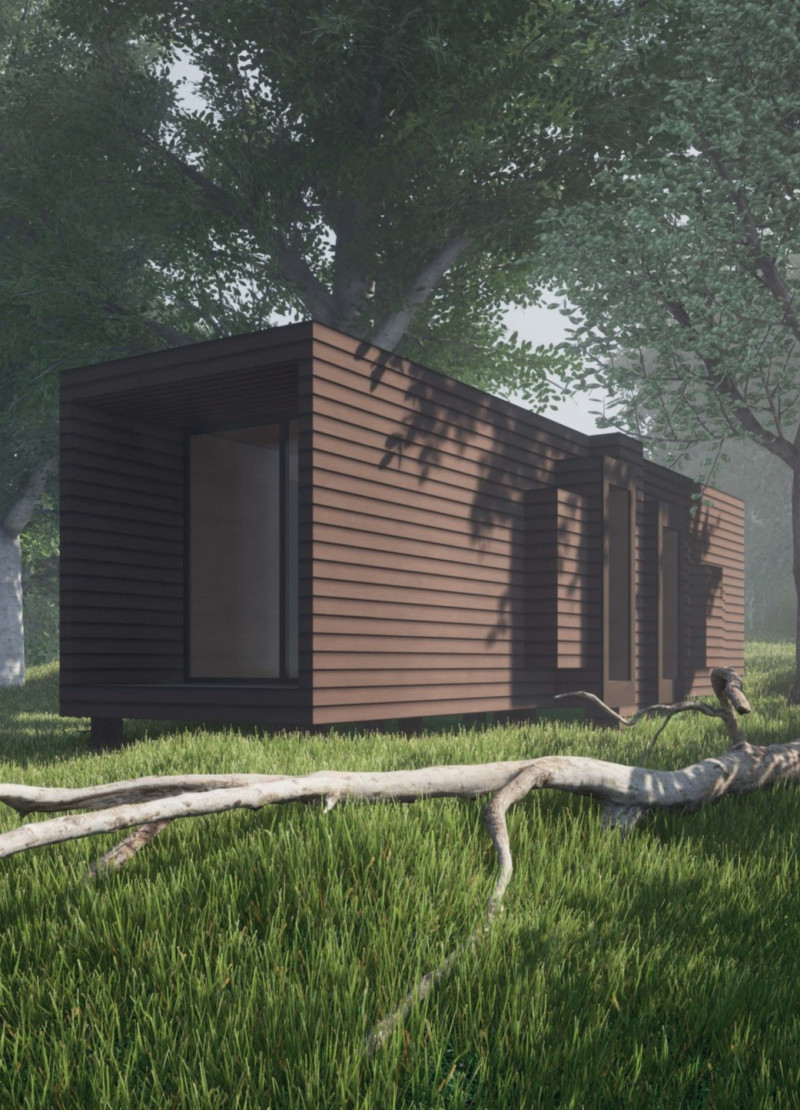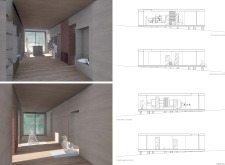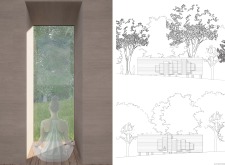5 key facts about this project
The TINY KIWI MEDITATION CABIN is designed as a peaceful retreat located in a remote area, far from urban structures. The setting is characterized by its natural beauty, and the building seeks to strengthen the bond between its users and the landscape. Inspired by a dead tree found on site, the cabin symbolizes themes of continuity and renewal. It serves as a space for meditation and reflection, allowing people to connect deeply with their surroundings.
Concept and Functional Design
The design emphasizes harmony with nature. Functional outgrowths extend from the main structure, enhancing usability without taking away from the area dedicated to meditation. These outgrowths serve as seating, storage, and a fireplace, providing essential elements that support user activities. When meditation sessions occur, sliding walls can enclose these areas, creating a more focused and tranquil environment.
Separation of Spaces
At the entrance, an altar divides the cabin into two distinct areas: one for treating flower essences and the other for meditation. This separation helps users engage meaningfully with both purposes. Natural light is an important feature. A zenithal window brings illumination to the altar, enhancing the cabin's overall atmosphere and creating a sense of calm and light throughout.
Material Selection and Construction
The foundation uses raw tree trunks, connecting the building directly to the landscape. This choice highlights the natural cycles present in the environment. Indigenous wood is predominantly used throughout the structure, from the framework to the finishes. This selection reflects a focus on sustainability and reduces environmental impact by using locally sourced materials, in line with modern architectural practices.
Design Details
The TINY KIWI MEDITATION CABIN demonstrates an approach to building that values simplicity and awareness of nature. The design thoughtfully balances space, material, and light, contributing to a fulfilling experience for users. Light flows through the openings, casting shadows that shift throughout the day, creating a changing environment that deepens the user’s connection to the natural world outside.






















































